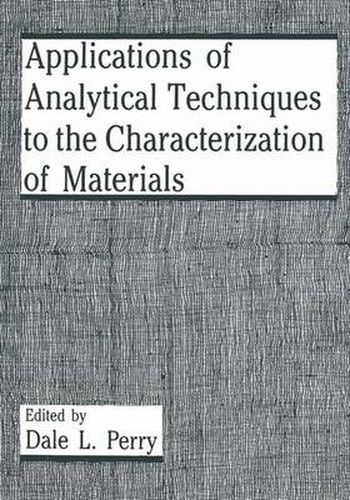Readings Newsletter
Become a Readings Member to make your shopping experience even easier.
Sign in or sign up for free!
You’re not far away from qualifying for FREE standard shipping within Australia
You’ve qualified for FREE standard shipping within Australia
The cart is loading…






This title is printed to order. This book may have been self-published. If so, we cannot guarantee the quality of the content. In the main most books will have gone through the editing process however some may not. We therefore suggest that you be aware of this before ordering this book. If in doubt check either the author or publisher’s details as we are unable to accept any returns unless they are faulty. Please contact us if you have any questions.
Over the last several years, the field of materials science has witnessed an explosion of new, advanced materials. They encompass many uses and include superconductors, alloys, glasses, and catalysts. Not only are there quite a number of new enhies into these generic classes of materials, but the materials themselves represent a wide array of physical forms as well. Bulk materials, for example, are being synthesized and applica tions found for them, while still other materials are being synthesized as thin films for yet still more new (and in some cases, as yet unknown) applications. The field continues to expand with (thankfully!) no end in sight as to the number of new possibilities. As work progresses in this area, there is an ever increasing demand for knowing not only what material is formed as an end product but also details of the route by which it is made. The knowledge of reaction mechanisms in their synthesis many times allows a researcher to tailor a preparative scheme to either arrive at the final product in a purer state or with a better yield. Also, a good fundamental experimental knowledge of impuri ties present in the final material helps the investigator get more insight into making it.
$9.00 standard shipping within Australia
FREE standard shipping within Australia for orders over $100.00
Express & International shipping calculated at checkout
This title is printed to order. This book may have been self-published. If so, we cannot guarantee the quality of the content. In the main most books will have gone through the editing process however some may not. We therefore suggest that you be aware of this before ordering this book. If in doubt check either the author or publisher’s details as we are unable to accept any returns unless they are faulty. Please contact us if you have any questions.
Over the last several years, the field of materials science has witnessed an explosion of new, advanced materials. They encompass many uses and include superconductors, alloys, glasses, and catalysts. Not only are there quite a number of new enhies into these generic classes of materials, but the materials themselves represent a wide array of physical forms as well. Bulk materials, for example, are being synthesized and applica tions found for them, while still other materials are being synthesized as thin films for yet still more new (and in some cases, as yet unknown) applications. The field continues to expand with (thankfully!) no end in sight as to the number of new possibilities. As work progresses in this area, there is an ever increasing demand for knowing not only what material is formed as an end product but also details of the route by which it is made. The knowledge of reaction mechanisms in their synthesis many times allows a researcher to tailor a preparative scheme to either arrive at the final product in a purer state or with a better yield. Also, a good fundamental experimental knowledge of impuri ties present in the final material helps the investigator get more insight into making it.